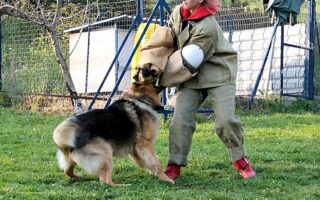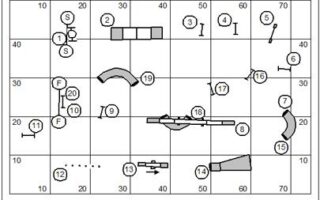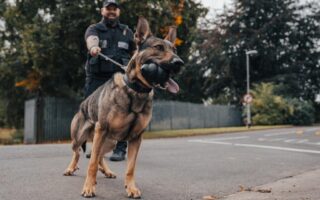Title: The Joy of Training Your Pitbull Puppy: A Guide to Building a Strong Bond
Welcoming a Pitbull puppy into your home is more than just adopting a pet; it’s inviting a loyal companion and a spirited family member into your life. Known for their strength, intelligence, and affectionate nature, Pitbulls often captivate the hearts of their owners with their playful antics and endearing personalities. However, like any breed, they require proper training and socialization to flourish as well-rounded, well-mannered dogs. In this article, we will explore effective training techniques tailored for Pitbull puppies, emphasizing the importance of consistency, patience, and positive reinforcement. Whether you’re a seasoned dog owner or a first-time puppy parent, our guide will equip you with the tools and knowledge to cultivate a joyful, harmonious relationship with your furry friend from day one. Let’s embark on this rewarding journey of training, where every lesson strengthens the bond between you and your Pitbull puppy.
Table of Contents
- Understanding the Unique Nature of Pitbull Puppies
- Essential Training Techniques for Early Development
- Socialization Strategies for a Well-Adjusted Companion
- Maintaining Consistency and Positive Reinforcement in Training
- Q&A
- In Conclusion
Understanding the Unique Nature of Pitbull Puppies
Pitbull puppies possess a dynamic blend of energy, intelligence, and loyalty that makes them a remarkable breed. Understanding their temperament is crucial for effective training, as these pups are often misunderstood. Early socialization is key to helping them develop into well-rounded adult dogs. Exposing your puppy to a variety of people, environments, and other animals will build their confidence and curb any potential behavioral issues. Engaging with them regularly ensures they remain emotionally healthy and less prone to anxiety.
When it comes to training, employing positive reinforcement techniques works wonders with Pitbull puppies. They thrive on praise and rewards, so using treats and enthusiastic commendations can motivate them to learn faster. Consider incorporating structured routines and basic commands, such as “sit,” “stay,” and “come.” This not only establishes a solid foundation for obedience but also deepens the bond between you and your puppy.
| Training Tip | Description |
|---|---|
| Socialization | Introduce your puppy to different environments and people. |
| Positive Reinforcement | Use treats and praise to encourage good behavior. |
| Consistency | Maintain a regular training routine for best results. |
| Patience | Give your puppy time to learn and adjust without pressure. |
Essential Training Techniques for Early Development
Training a Pitbull puppy requires a blend of understanding, patience, and focused techniques. Positive reinforcement is a cornerstone of successful training, rewarding good behavior with treats, praise, or playtime. Through this method, you encourage your puppy to associate desirable actions with positive outcomes. Create a structured training schedule, choosing consistent commands and signals that will guide your pup effectively. Repetition is key, so ensure that training sessions are short but engaging—aim for around 5-10 minutes multiple times a day to maintain your puppy’s interest and attention.
Incorporating basic commands into training sessions can significantly enhance your puppy’s discipline and responsiveness. Start with foundational commands such as sit, stay, and come. Using a clear and assertive tone will help your puppy grasp the commands faster. To track your puppy’s progress, consider using a simple table to note behaviors and improvements:
| Command | Success Rate (%) | Notes |
|---|---|---|
| Sit | 85 | Responds well with treats |
| Stay | 70 | Needs more practice |
| Come | 90 | Loves the chase element |
Remember to maintain a positive atmosphere during training, as your puppy can easily pick up on your emotions. Consistency, patience, and engagement will not only build a strong bond between you and your Pitbull but will also set the groundwork for a well-behaved adult dog.
Socialization Strategies for a Well-Adjusted Companion
Creating a well-adjusted companion starts with effective socialization during the early stages of your pitbull puppy’s life. Engaging in a variety of activities can help your puppy develop confidence and adaptability. Consider the following approaches:
- Meet and Greet: Introduce your puppy to different people, including children, adults, and elderly individuals to create positive experiences.
- Dog Parks: Take your puppy to dog-friendly parks where they can interact with other dogs in a controlled environment.
- Class Enrollments: Attend puppy training classes that focus not only on obedience but also on proper social interactions.
- New Environments: Expose your pitbull to various settings—such as busy streets, pet-friendly stores, or outdoor events—to help them acclimate to new stimuli.
Additionally, structure your socialization exercises to ensure a gradual and positive experience. Keeping track of your puppy’s interactions can be beneficial. Here’s a simple table to help you organize your weekly socialization goals:
| Day | Activity | Location |
|---|---|---|
| Monday | Meet neighbors | Home |
| Wednesday | Dog park play | Local Dog Park |
| Friday | Training class | Pet Training Center |
| Sunday | Farmers market visit | Community Plaza |
Maintaining Consistency and Positive Reinforcement in Training
Achieving success in training your pitbull puppy relies heavily on establishing a routine that fosters learning and growth. Consistency is key when teaching commands or behaviors; using the same cue phrases and gestures every time helps your puppy associate them with specific actions. To enhance this process, consider implementing a structured schedule that includes dedicated training sessions. During these sessions, be sure to maintain an atmosphere of enthusiasm and engagement to keep your puppy eager to learn. Here are some tips to maintain consistency:
- Use clear and distinct commands.
- Practice for short, frequent periods to keep your puppy focused.
- Involve all family members to ensure everyone uses the same cues.
Positive reinforcement is equally essential in making training an enjoyable experience for both you and your pitbull puppy. Rewarding good behavior with treats, praise, or playtime builds a strong bond and encourages your puppy to repeat the desired actions. This method is highly effective because it shifts the focus from punishment to reward, making learning a positive experience. Implement these strategies to enhance positive reinforcement:
- Always reward immediately after the desired behavior.
- Vary the rewards to keep your puppy interested.
- Be patient and consistent with your rewards to enforce good behavior.
Q&A
Q&A: Pitbull Puppy Training Guide
Q1: What is the best age to start training a pitbull puppy?
A1: The ideal time to begin training a pitbull puppy is as early as 8 weeks old. At this age, they’re highly receptive to learning and can quickly absorb new commands and socialization skills. Starting early helps set the foundation for good behavior throughout their life.
Q2: Are pitbulls difficult to train compared to other breeds?
A2: While some may consider pitbulls to be a challenging breed to train, they are actually quite intelligent and eager to please. With consistent, positive reinforcement techniques and a dedicated approach, pitbulls can learn commands and tricks just as easily as other breeds.
Q3: What training methods work best for pitbull puppies?
A3: Positive reinforcement is the most effective training method for pitbull puppies. This can include treats, praise, or playtime as rewards for good behavior. Establishing a routine and using clear, consistent commands will also help your puppy understand what is expected from them.
Q4: How important is socialization for a pitbull puppy?
A4: Socialization is crucial for pitbull puppies. Exposing them to different environments, animals, and people helps them develop into well-adjusted adult dogs. Aim for controlled experiences that promote positive interactions, and remember that early socialization can prevent behavioral issues in the future.
Q5: How can I deal with any stubbornness during training?
A5: Patience is key when addressing stubbornness in pitbull puppies. If your puppy is resistant to commands, try varying your training techniques or utilizing different rewards to keep their interest. Short, engaging training sessions can also help maintain their focus and enthusiasm.
Q6: What are some common commands every pitbull should learn?
A6: Essential commands for pitbull puppies include ”sit,” “stay,” “come,” “down,” and “leave it.” These basic commands provide a foundation for more advanced training and are crucial for ensuring your puppy’s safety and good manners around others.
Q7: How do I handle aggressive behavior in my pitbull puppy?
A7: Addressing aggressive behavior starts with identifying the triggers and avoiding them during training. It’s important to work with a professional dog trainer or behaviorist who has experience with pitbulls. Consistent training, positive reinforcement, and socialization can reduce aggressive tendencies over time.
Q8: Are there specific tools or resources I should consider for training a pitbull puppy?
A8: A good quality leash, collar, and clicker can enhance your training experience. Additionally, books, online courses, and local dog training classes can provide valuable techniques and insights into training your pitbull. Seek out resources that emphasize positive reinforcement and humane training practices.
Q9: How long should I expect the training process to take?
A9: Training is an ongoing process, and the timeline can vary depending on the individual puppy and the consistency of your efforts. Basic commands may take a few weeks to solidify, while behavioral training can take longer. Consistent practice and patience are essential for successful training.
Q10: Can I train my pitbull puppy myself, or should I hire a professional?
A10: Many pitbull owners successfully train their puppies themselves using positive reinforcement techniques. However, if you’re struggling with behavioral issues or simply want guidance, hiring a professional trainer can be beneficial. They can provide tailored advice and effective training strategies based on your puppy’s specific needs.
With dedication and the right approach, training a pitbull puppy can be an enjoyable journey that strengthens the bond between you and your furry companion. Keep it fun and rewarding, and you’ll be well on your way to having a well-behaved and happy pitbull!
In Conclusion
training a pitbull puppy is a journey filled with unique challenges and rewarding triumphs. As you embark on this adventure, remember that patience and consistency are your most valuable allies. Every command mastered and every boundary respected strengthens the bond between you and your furry companion. Embrace the quirks and spirited nature of your pitbull, for they are what make this breed so endearing.
As you nurture your puppy’s growth, celebrate each small victory and remain mindful of the loving, loyal partner you are cultivating. By investing your time and effort into training, you are not just shaping a well-mannered dog but also fostering a relationship built on trust and understanding. So, step forward with confidence, and enjoy every wagging tail and playful bark along the way. Your journey together has just begun, and the possibilities are endless!


